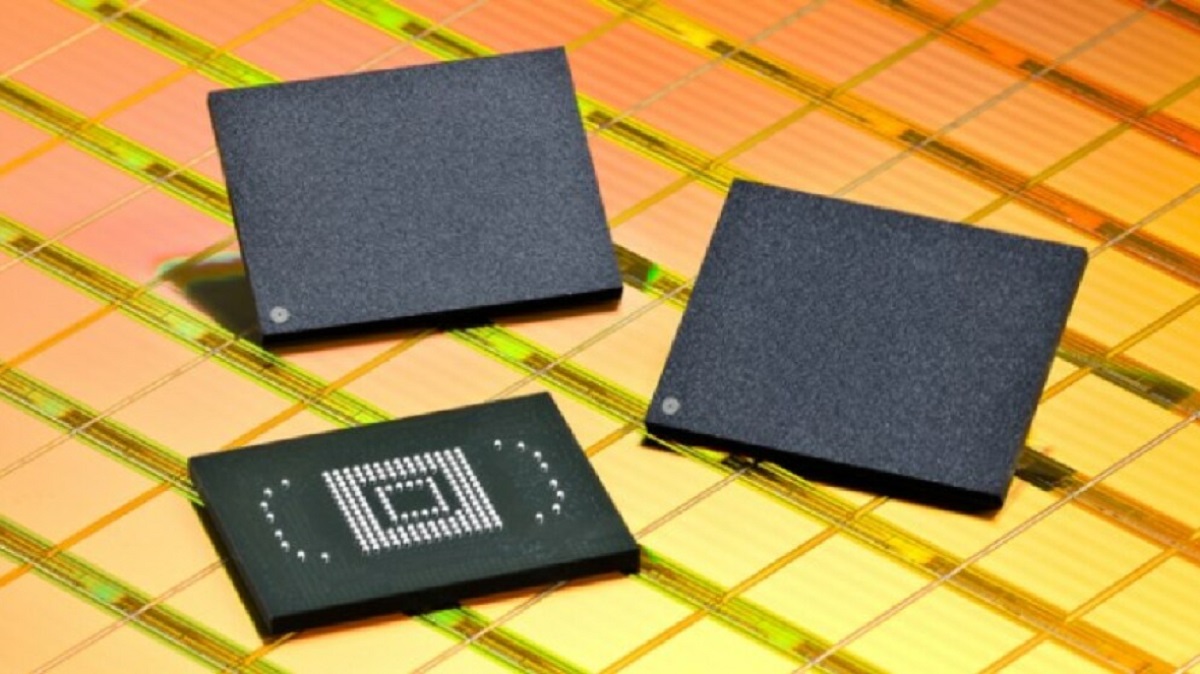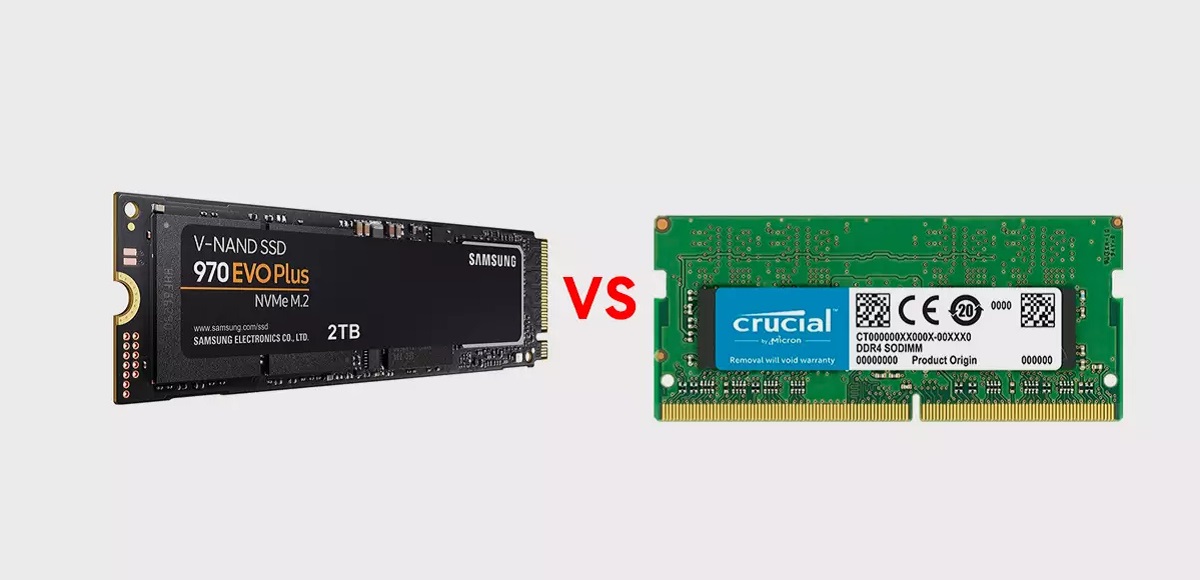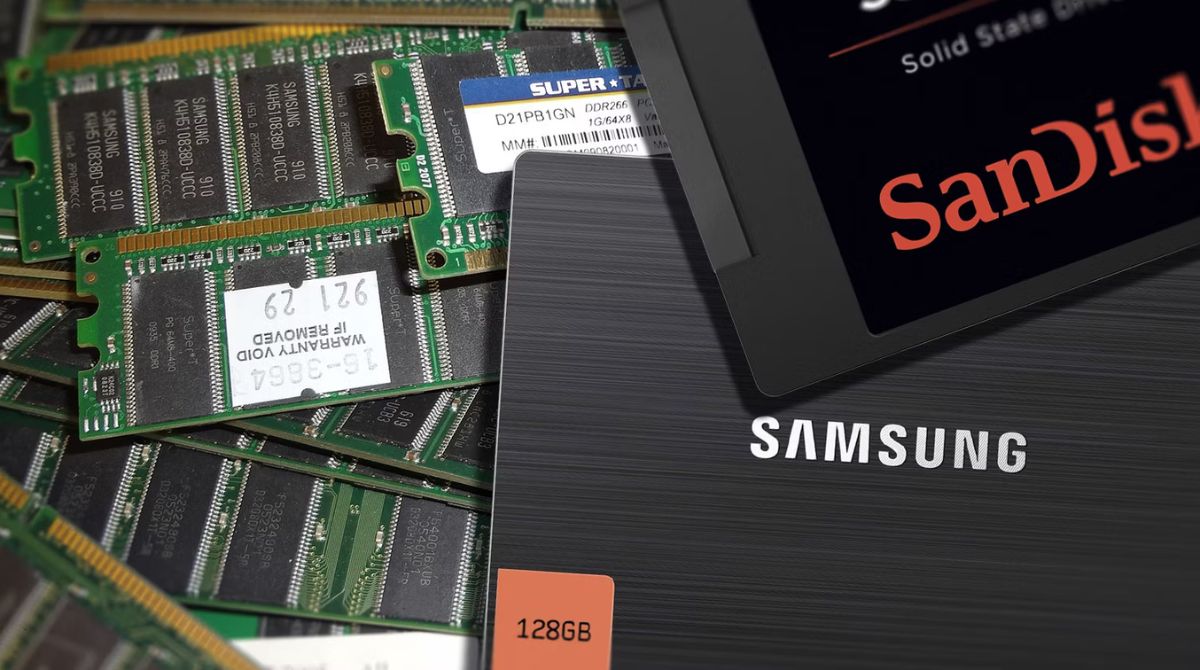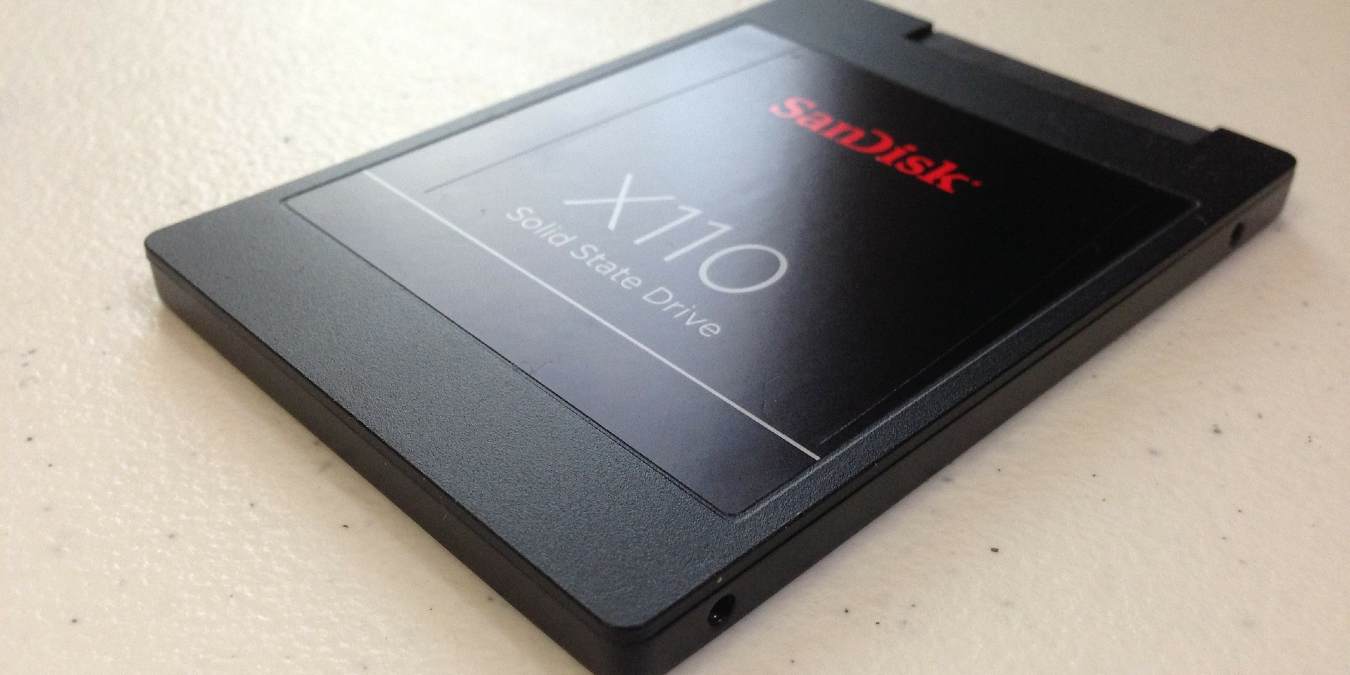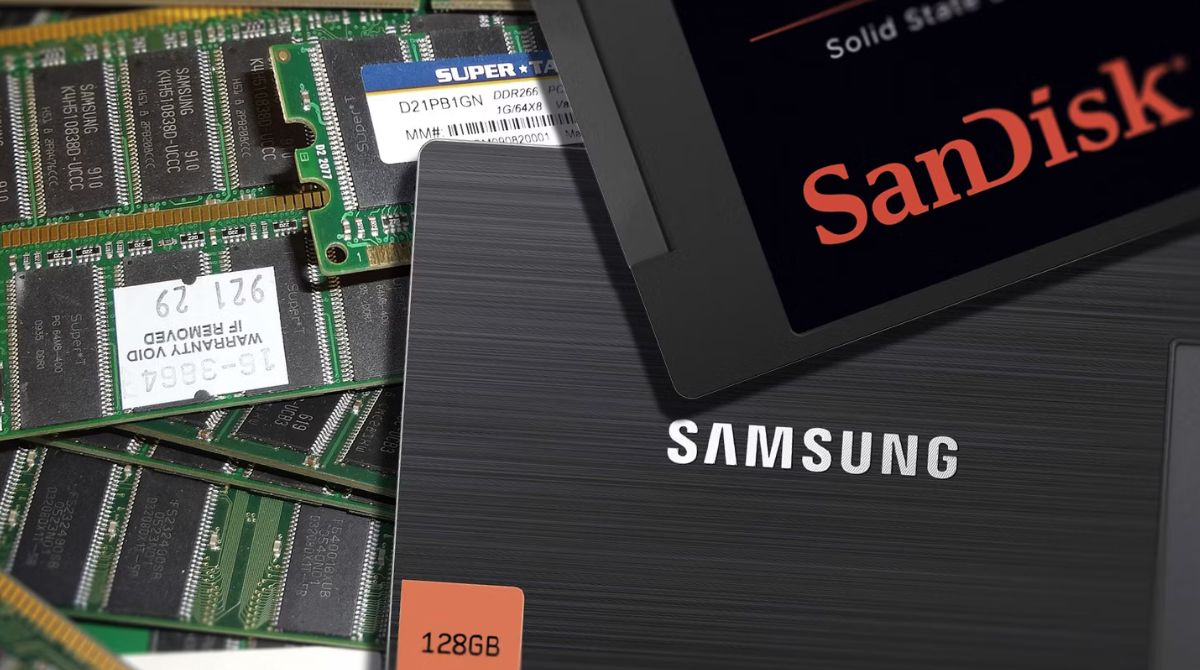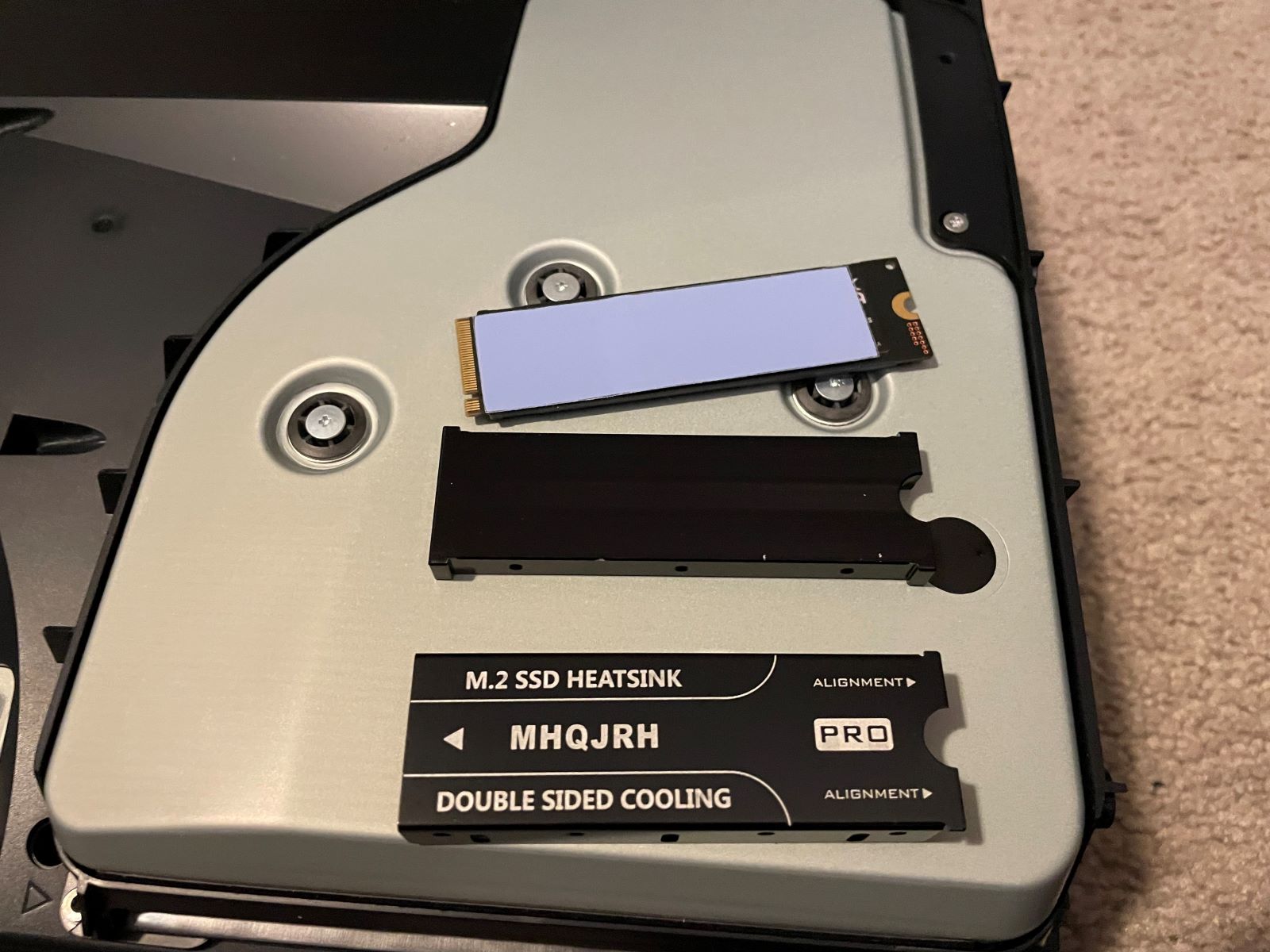Introduction
Welcome to this article on the topic of how long an SSD can hold data without power. Solid-State Drives (SSDs) have become increasingly popular in recent years due to their faster speeds, durability, and lower power consumption compared to traditional hard disk drives (HDDs). As more people transition to using SSDs for their storage needs, it is essential to understand the lifespan of the data stored on these drives.
An SSD, in simple terms, is a type of storage device that uses flash memory to store data in a non-volatile manner. Unlike HDDs, which rely on spinning disks and magnetic storage, an SSD has no moving parts and instead utilizes integrated circuits to store and retrieve data quickly. This makes it more resistant to physical damage and less prone to data loss.
While SSDs offer numerous advantages, one common concern among users is the longevity of data stored on these drives. Unlike volatile memory, which requires a constant power source to retain data, SSDs use a technique called NAND flash memory to store information even when not powered. However, it is important to note that data retention in SSDs is not indefinite, and various factors can affect how long the data will remain intact without power.
In this article, we will explore the concept of data retention in SSDs and delve into the factors that influence the lifespan of stored data. Additionally, we will provide tips on how to maximize the data retention lifespan of an SSD. By the end, you will have a better understanding of how long an SSD can hold data without power and how to ensure the longevity of your stored information.
What is an SSD?
An SSD, short for Solid-State Drive, is a type of storage device that is used to store and retrieve digital data. It is a non-volatile memory device that uses flash memory, a type of electronic storage, to store data. Unlike traditional hard disk drives (HDDs) which use spinning magnetic disks, SSDs do not have any moving parts. Instead, they rely on integrated circuits and semiconductor technology to store and retrieve data quickly and reliably.
SSDs have gained popularity in recent years due to their numerous advantages over HDDs. One of the key advantages is their speed. SSDs have incredibly fast read and write speeds, which means that data can be accessed and transferred much faster than with HDDs. This makes SSDs ideal for tasks that require high-speed data access, such as booting up a computer, opening large files, or running demanding software.
Another advantage of SSDs is their durability. Since SSDs do not have any moving parts, they are less susceptible to physical damage. This makes them more resistant to shock, vibration, and drops, compared to HDDs. Additionally, SSDs are not affected by magnetic fields, making them more reliable in environments where magnetic interference may be present.
SSDs also consume less power than HDDs, which is beneficial for portable devices like laptops and tablets. The absence of moving parts in an SSD means that there is less power required to run the drive, resulting in increased battery life.
Furthermore, SSDs operate silently as they do not generate any noise due to the lack of moving components. This can be advantageous in environments where noise pollution needs to be kept to a minimum, such as recording studios or libraries.
In summary, an SSD is a non-volatile storage device that utilizes flash memory and semiconductor technology to store and retrieve digital data. Its advantages include fast read and write speeds, durability, low power consumption, and silent operation. These features have made SSDs the preferred choice for many applications that require high-performance storage, from personal computers to enterprise-level data centers.
How does an SSD store and read data?
An SSD (Solid-State Drive) uses a complex system to store and retrieve data. Unlike traditional hard disk drives (HDDs) that rely on spinning disks and magnetic storage, SSDs use a method called NAND flash memory to store information. Understanding how an SSD stores and reads data can help shed light on its performance and reliability.
At the core of an SSD’s storage system are NAND flash memory chips. NAND flash memory is a type of non-volatile memory, meaning it retains data even when power is removed. These memory chips are divided into individual memory cells, which are further organized into pages and blocks.
When data is written to an SSD, it is stored in the individual memory cells, specifically in the form of electrons being trapped within these cells. A high voltage is applied to the cell’s floating gate, effectively trapping the electrons. This process alters the cell’s electrical state, representing either a “0” or a “1”, the basis of binary data storage.
Reading data from an SSD involves a similar process. Electrical current is applied to the selected memory cell, and the resulting voltage is measured. A high voltage indicates the presence of trapped electrons, representing a “1”. Conversely, a low voltage indicates the absence of trapped electrons, representing a “0”.
To access a specific piece of data, such as a file or document, the SSD’s controller determines the physical location of the data in the memory cells based on the file system’s addressing system. The controller sends a signal to the appropriate memory cells, instructing them to release or trap electrons, allowing the data to be read or written.
SSDs also employ wear leveling algorithms to ensure uniform utilization of the memory cells. This helps prevent wear and tear on specific cells and extends the overall lifespan of the drive. Additionally, many SSDs incorporate error correction codes (ECC) to detect and correct any data corruption or errors that may occur during storage or retrieval.
In summary, an SSD stores data using NAND flash memory cells, trapping electrons to represent binary data. When data is read, the electrical state of the cells is measured to determine the stored information. The controller and wear leveling algorithms manage the organization and usage of the memory cells, ensuring efficient and reliable data storage and retrieval.
Factors that influence data retention in an SSD
While Solid-State Drives (SSDs) are known for their reliability, it is important to understand that various factors can influence the retention of data stored on these drives. While SSDs utilize non-volatile NAND flash memory to retain data, the lifespan of stored data can be affected by several factors. Understanding these factors can help users make informed decisions and take necessary measures to ensure the longevity of their data.
1. Temperature: Extreme temperatures can have a significant impact on an SSD’s data retention. Both high temperatures and freezing conditions can cause the electrical characteristics of the NAND flash memory to deteriorate, potentially leading to data loss. It is crucial to store and operate SSDs within the recommended temperature range specified by the manufacturer.
2. Power Loss: The lack of power can affect the stability of data stored in the SSD. When an SSD loses power, the stored charges in the memory cells may decay over time, gradually erasing the stored data. This is why it is imperative to properly shut down a device or use uninterruptible power supplies (UPS) to prevent abrupt power losses that could impact data retention.
3. Age: Over time, the data retention capabilities of an SSD may diminish. As an SSD is used and subjected to numerous read and write cycles, it may experience wear and tear, leading to a decrease in its ability to retain data. This is often referred to as “write endurance.” Manufacturers provide specifications regarding the endurance rating of SSDs, indicating the expected lifespan of the drive under normal usage conditions.
4. Storage Conditions: The way an SSD is stored when not in use can impact its data retention. Storing the drive in dry, cool, and clean environments can help preserve the integrity of the NAND flash memory. Exposure to moisture, dust, and excessive humidity can lead to data corruption or physical damage to the drive.
5. Data Refresh: To mitigate the decay of stored charges, SSDs employ data refresh techniques. This involves periodically rewriting the stored data to refresh the electrical charges in the memory cells. The frequency of data refresh varies across different SSD models, with higher-endurance drives often having more robust data refresh capabilities.
It is important to note that while these factors can influence data retention in an SSD, modern SSDs are designed to have a significantly longer data retention lifespan compared to traditional magnetic storage. However, it is still essential to take proactive measures to ensure data integrity, such as maintaining appropriate storage conditions, using reliable power sources, and regularly backing up important data.
The concept of data retention and data loss in SSDs
Data retention and the potential for data loss are essential considerations when it comes to Solid-State Drives (SSDs). While these drives are known for their reliability and durability, it is crucial to understand the factors that can affect data retention and the possible scenarios of data loss.
Data retention refers to the ability of an SSD to retain stored data over time, even without power. Unlike volatile memory, which requires a constant power source to preserve data, SSDs employ non-volatile NAND flash memory to retain information. This means that data stored in an SSD should stay intact for extended periods. However, there are circumstances that can lead to data loss.
One potential scenario is when an SSD reaches its end of life or exceeds its endurance rating. SSDs have a limited number of write cycles before their memory cells degrade. As cells degrade, data retention can be compromised, eventually leading to permanent data loss. It is essential to keep track of an SSD’s endurance rating and consider replacing it before reaching its specified lifespan.
Another factor that can contribute to data loss is power failure. SSDs require a consistent power source to maintain data integrity. In the event of a sudden power loss, data that has not been written to the drive’s storage cells may be lost. To mitigate this risk, it is recommended to use backup power sources, such as uninterruptible power supplies (UPS), to provide sufficient time for proper shutdown procedures and prevent abrupt power losses.
Environmental factors can also impact data retention and the potential for data loss in SSDs. Extreme temperatures can cause the degradation of NAND flash memory, leading to data corruption or loss. Exposing an SSD to high levels of heat or extreme cold can affect the integrity of the stored data. It is crucial to adhere to the recommended temperature ranges provided by the manufacturer to ensure optimal data retention.
Additionally, physical damage to an SSD can result in data loss. Dropping the drive or subjecting it to impact can damage the delicate circuitry and memory cells. It is important to handle SSDs with care and avoid situations that may cause physical harm to the drive.
Protecting data in SSDs also involves considering data security measures. Encryption and proper access controls can safeguard data stored on an SSD from unauthorized access, ensuring the confidentiality and integrity of sensitive information.
Regular backups are crucial to mitigate the risks associated with data retention and potential data loss. By regularly backing up important data stored on an SSD, users can minimize the impact of any unforeseen events and ensure the availability of their critical information.
In summary, while SSDs offer enhanced durability and reliability compared to traditional storage solutions, it is important to understand the concept of data retention and the potential for data loss. By considering factors such as endurance rating, power failure, environmental conditions, physical damage, and implementing data security measures, users can better protect their data and minimize the risk of permanent data loss.
How long can an SSD hold data without power?
One of the notable advantages of Solid-State Drives (SSDs) is their ability to retain data even when not powered on. Unlike volatile memory, which loses its data when the power source is removed, SSDs use non-volatile NAND flash memory to store information. However, the duration for which an SSD can hold data without power depends on several factors.
The typical data retention lifespan of an SSD can range from a few years to several decades. Some manufacturers claim data retention rates of up to 10 years or more. However, it is important to note that these estimates are based on ideal storage conditions and usage patterns.
The primary factor that determines how long an SSD can retain data without power is the quality of the NAND flash memory used. Higher-quality memory chips generally offer better data retention capabilities. Manufacturers go through rigorous testing to ensure their SSDs can retain data reliably for extended periods. However, as the SSD ages and undergoes repeated read and write cycles, its data retention ability may diminish.
Furthermore, environmental conditions play a crucial role in data retention. Extreme temperatures can accelerate the degradation of the memory cells and shorten the data retention lifespan. SSDs should be stored in environments that maintain ideal temperature and humidity ranges specified by the manufacturer.
It is important to consider the power-loss behavior of the SSD when discussing data retention. Most SSDs have built-in capacitors that provide a short period of power to allow for the completion of ongoing data operations and flush buffers to the NAND flash memory when the power is cut off. This helps to minimize the risk of data loss in case of abrupt power failure. The duration for which the capacitors can sustain the SSD varies among different models and should be considered when evaluating the data retention time without power.
It is worth mentioning that the rate of data degradation in an SSD is typically slow. While there is no definitive answer to how long an SSD can hold data without power, it is generally considered safe for a period of several years. However, for long-term data storage, it is always advisable to have a reliable backup system in place. Regularly backing up data from an SSD to an external storage device or the cloud can provide an additional layer of protection against the potential loss of information.
To ensure the longevity of data stored on an SSD without power, it is recommended to follow best practices such as proper storage conditions, avoiding exposure to extreme temperatures, and implementing regular data backup strategies.
In summary, SSDs have the ability to retain data for extended periods without power, thanks to the non-volatile nature of NAND flash memory. The actual duration depends on factors such as the quality of the memory chips, environmental conditions, and the power-loss behavior of the SSD. While SSDs offer reliability, it is always prudent to have a backup system in place to ensure data continuity and mitigate any potential risk of data loss.
Factors that affect the data retention lifespan of an SSD
The data retention lifespan of a Solid-State Drive (SSD) is influenced by various factors that can impact the reliability and longevity of stored data. Understanding these factors can help users make informed decisions on how to maximize the lifespan of their SSDs and ensure the preservation of critical information.
1. NAND Flash Memory Quality: The quality of the NAND flash memory used in an SSD plays a crucial role in data retention. Higher-quality memory chips tend to have superior data retention capabilities. It is recommended to choose SSDs from reputable manufacturers that employ high-grade NAND flash memory in their drives.
2. Endurance Rating: Every SSD has a specified endurance rating that indicates the number of write cycles it can withstand before its performance and data retention abilities degrade. The higher the endurance rating, the longer the SSD is expected to retain data. It is important to consider this rating when selecting an SSD for specific use cases.
3. Temperature and Environmental Conditions: Extreme temperatures can accelerate the degradation of NAND flash memory cells, impacting data retention. SSDs should be operated within the recommended temperature range provided by the manufacturer. Exposure to humidity, dust, and other contaminants can also affect the SSD’s data retention capacity, underscoring the need for proper storage and usage conditions.
4. Power Loss: Abrupt power loss can potentially impact data retention in an SSD. The absence of power can lead to subtle voltage fluctuations or charge losses within the memory cells. To mitigate this risk, SSDs employ power loss protection mechanisms, such as capacitors, to flush data buffers and ensure data integrity when power is suddenly cut off. Choosing SSDs with robust power loss protection features can enhance data retention capabilities.
5. Usage Patterns: The way an SSD is used can affect its data retention lifespan. Excessive write operations or intense workloads can lead to higher wear and tear on the NAND flash memory cells, potentially reducing data retention capabilities over time. It is important to consider the workload requirements and select an SSD with an appropriate endurance rating for the intended usage scenario.
6. Age: Similar to other electronic devices, aging can impact an SSD’s performance and data retention abilities. Over time, memory cells may degrade and become less reliable. This is especially relevant for older SSDs or those nearing their specified endurance limits. Regularly monitoring the age of an SSD and considering replacement when necessary can help optimize data retention capabilities.
7. Manufacturing Variations: Manufacturing processes and variations among different SSD models can affect data retention. Differences in the quality control and manufacturing techniques employed by various manufacturers can impact the overall reliability and data retention capabilities of the SSD. It is advisable to choose SSDs from reputable manufacturers with a proven track record in producing reliable storage solutions.
By considering these factors, users can make educated decisions when selecting, using, and maintaining their SSDs, ultimately maximizing the data retention lifespan. Employing best practices such as maintaining suitable environmental conditions, implementing regular data backups, and monitoring the health and performance of the SSD can mitigate the risk of data loss or corruption.
Tips to prolong the data retention lifespan of an SSD
Prolonging the data retention lifespan of a Solid-State Drive (SSD) involves implementing certain practices to ensure the longevity and reliability of stored data. By following these tips, users can maximize the lifespan of their SSDs and minimize the risk of data loss or corruption.
1. Monitor SSD Health: Regularly monitor the health and performance of your SSD using built-in diagnostic tools or third-party software. This allows you to stay informed about the overall condition of the drive and take prompt action if any issues are detected. Monitoring can help you identify potential reliability or data retention concerns at an early stage.
2. Backup Important Data: Implement a regular backup strategy to safeguard important data stored on your SSD. Backing up data to an external storage device or a cloud-based service provides an extra layer of protection in case of unexpected data loss or SSD failure. By keeping multiple copies of your data, you can easily recover and restore it, even if the SSD experiences failure.
3. Maintain Appropriate Storage Conditions: Store your SSD in a cool, dry, and clean environment. Avoid exposing it to extreme temperatures, high humidity, or dusty environments, as these can affect the performance and data retention capabilities of the drive. Protecting the physical integrity of the SSD can help preserve its reliability and longevity.
4. Ensure Proper Power Supply: Abrupt power loss can potentially impact data retention in an SSD. To prevent this, use a reliable power supply and consider implementing an uninterruptible power supply (UPS) to provide backup power in case of sudden power outages. This allows the SSD to complete ongoing write operations and flush buffers to the memory cells properly.
5. Update SSD Firmware: Regularly check for firmware updates provided by the SSD manufacturer. Firmware updates often include performance improvements, bug fixes, and enhancements that can optimize the SSD’s functionality and data retention capabilities. Keeping your SSD firmware up to date helps ensure the best possible performance and reliability.
6. Avoid Excessive Write Operations: Minimize unnecessary write operations to your SSD to prolong its lifespan. While SSDs have improved endurance compared to older models, excessive write operations can still wear down the NAND flash memory cells over time. Consider storing frequently modified files on a separate drive or utilizing techniques such as symbolic links or junction points to redirect write-intensive operations.
7. Use Trim and Garbage Collection: Enable the TRIM command and utilize garbage collection features provided by your operating system and SSD controller. TRIM helps the SSD efficiently manage used and unused data blocks, optimizing performance and extending the overall lifespan. Garbage collection processes ensure that deleted data is properly erased to prevent residual data from affecting performance and data retention.
8. Avoid Disk Defragmentation: SSDs do not benefit from traditional disk defragmentation processes used for hard disk drives. In fact, defragmenting an SSD can cause unnecessary wear and tear on the NAND flash memory cells. Modern operating systems automatically recognize SSDs and disable defragmentation. However, it is recommended to double-check your system settings to ensure defragmentation is disabled.
By following these tips, users can proactively take steps to prolong the data retention lifespan of their SSDs. Prioritizing data backup, monitoring SSD health, maintaining appropriate storage conditions, managing power supply, and utilizing firmware updates and optimized system settings can significantly enhance the reliability and longevity of your SSD.
Conclusion
Solid-State Drives (SSDs) have revolutionized the storage industry, offering faster speeds, enhanced durability, and lower power consumption compared to traditional hard disk drives (HDDs). Understanding how long an SSD can hold data without power and the factors that influence data retention is essential for users who rely on these drives for their storage needs.
Through this article, we have explored the concept of data retention in SSDs. We have learned that SSDs utilize non-volatile NAND flash memory, allowing data to be retained even when not powered. However, factors such as temperature, power loss, age, storage conditions, and NAND flash memory quality can impact the data retention lifespan of an SSD.
To maximize the data retention lifespan of an SSD, several tips can be followed. This includes monitoring SSD health, implementing regular data backups, maintaining appropriate storage conditions, ensuring proper power supply, updating firmware, minimizing excessive write operations, utilizing TRIM and garbage collection, and avoiding unnecessary disk defragmentation.
While SSDs offer durability and reliability, it is crucial to remember that data retention is not indefinite. SSDs have a specified endurance rating, and as they age, their ability to retain data may diminish. Thus, it is important to evaluate and replace older SSDs when necessary to ensure data integrity and longevity.
By understanding the factors that influence data retention and implementing best practices, users can protect their valuable data and minimize the risk of data loss or corruption. Regular monitoring, proper storage conditions, backup strategies, and firmware updates all contribute to prolonging the data retention lifespan of an SSD.
In conclusion, SSDs provide a reliable and efficient storage solution for various applications. By employing these tips and considering the factors that affect data retention, users can make the most out of their SSDs, ensuring the long-term preservation and accessibility of their important data.







